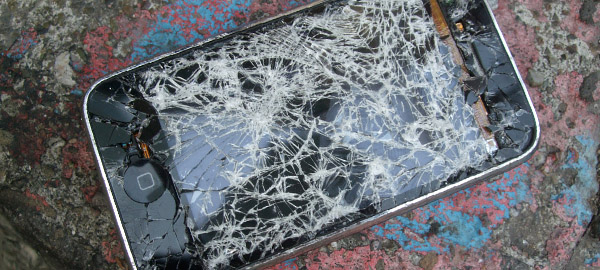Today, we follow up on our last article, which discussed procurement fraud and Apple’s bad apple, Paul Shin Devine, who has been accused of taking more than $1 million in illegal kickbacks from the suppliers of the iPod and iPhone categories he oversaw in his role as a global supply manager. It stands to reason – that if a supply manager working with suppliers in such high profile categories for such high-profile products at such a high-profile company can attempt (allegedly) an illegal kickback scheme, trouble may be lurking with other less exciting suppliers, categories, products, and companies – procurement fraud needs to be taken seriously. What follows are some strategies and advice from a few CPOs that take procurement fraud very seriously.
When news of this story hit, I reached out informally to a few Chief Procurement Officers and other procurement executives that are managing or working on the direct materials side today or have had significant experience doing so. By choosing to survey this crowd, I did not intend to imply that procurement fraud is only a risk on the direct side; I was simply looking for answers and approaches in the context of what happened at Apple. Besides, I previously discussed the scheming event planner and the US Department of Agriculture staffer, proving that many of the discussions about direct and indirect categories, solutions, challenges, and process are not really comparing apples (sorry) and oranges.
To start, most CPOs that I surveyed felt that credit should be given to Apple for finding the alleged case of procurement fraud and bringing it to light, despite the certain headlines and embarrassment (Sidebar: the point of these fraud prevention articles is not to chastise Apple, but to use it as a catalyst to discuss procurement fraud). Likewise, most CPOs shared a view that there is no panacea, no silver bullet to preventing this type of risk, because fraud, and collusion in particular, can be very difficult to detect. One other common theme among these CPOs was that successful fraud prevention programs start and end with a firm grounding in a strong culture of ethical conduct and corporate governance.
Said one company’s worldwide leader of global sourcing who also oversees several IPO offices “There is not just one solution needed, but a culture design. You need good accounting/financial controls. You need a whistle blower system. You need training. You need Leadership clearly stating what is right and wrong. You need system controls so as not allow breaches. You need IT controls; and in a procurement sense, you need a check and balance that looks carefully at outcomes that do not meet pre-determined acceptance criteria. It’s about a low tolerance to wrong doing with consequences known.”
Finally, “friend of the site” and Chief Procurement Officer at Leggett and Platt, Pete Connelly, weighs in with his approach:
“We have a very strong and deliberate supplier code of conduct policy worldwide. Several parameters include:
a) Each procurement employee signs a code of conduct compliance statement annually – every worldwide team member
b) There is a formal face-to-face review with every employee discussing the code of conduct. This includes examples of potential and real failures. We will use role play, case studies, and round table discussions to sensitize our Leggett partners as to the importance of our ethical standards and a zero tolerance policy in executing the spirit and letter of our standard.
c) We have face to face reviews with suppliers affirming our code of conduct and requiring them to confirm their adherence to it.
d) We have a corporate wide 1-(800) line-type reporting process where folks can call in and report possible violations directly to our independent Corporate Audit Officer.
Most of all, during our hiring and management process we stress the absolute requirement for integrity and honesty in every activity of Leggett and Platt. From a Procurement perspective we can sum it up as ‘do not steal, do not lie, do not deceive.’”
“Strong and deliberate…..” – that’s just great stuff and a great approach! And this is coming from someone who’s focused on and written about ethics in procurement in the recent past (albeit on a different theme).
I’d like to thank Pete Connelly and all the others who offered their ideas and strategies on preventing procurement fraud for this article.
RELATED ARTICLES
Shhhhhhhhh! – (Tricks) To Catch a Fraudster
Twelve Top Tips to Limit Procurement Fraud
Key Fraud Risks across Procurement Phases (Courtesy of the UN)
Procurement Fraud – An Issue for Public and Private Enterprises
(Procurement) Fraud Prevention (3) – Why It’s Important
How eSourcing Can Help Limit Procurement Fraud
Procurement Fraud Prevention – The Expert (Part 1)
Procurement Fraud Prevention – The Expert (Part 2)
Procurement Fraud Prevention – Two More Strategies

